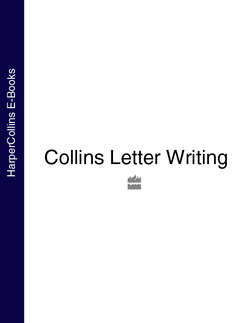Читать книгу Collins Letter Writing - Collins Dictionaries - Страница 12
PAPER TYPES
ОглавлениеUse the best-quality paper that you feel you can afford. Bond paper is paper that will not tear or crease easily. It is specially designed for letter writing and is recommended for all business, and social, communications. As a general rule, thick paper is good paper and 100g is an adequate weight to choose.
Try not to use flimsy paper unless you are writing a letter to be posted to or from abroad.
Bank paper is a thin paper that is generally used for file copies. It is not recommended for the actual letter that you intend to post. You should try to avoid using any flimsy or particularly thin paper: it’s quite difficult to handle and it looks a bit cheapskate. The recipient may be worried that it might tear. It is also, quite often, difficult to thread banktype paper successfully through a printer since the pages may cause the machine to jam as they go through.
If you are abroad, however, and writing to friends at home, then it would make sense to use thin paper, or even airmail paper, since this will cost less to post.
If you care about the environment, you may wish to use recycled stationery. This might be considered slightly startling in some business circles but certainly shouldn’t be. Recycled stationery is becoming more and more common and is easily purchased in most decent stationery shops.
